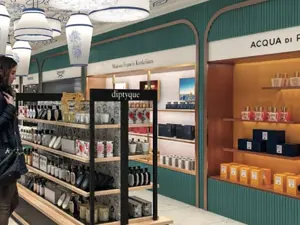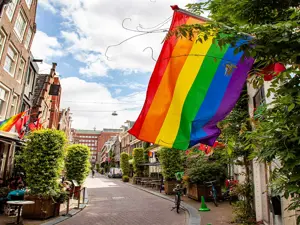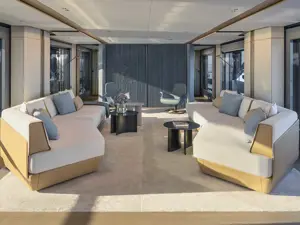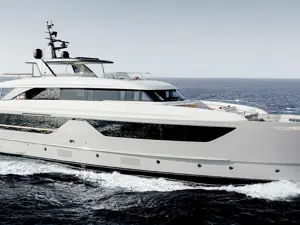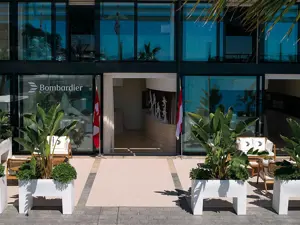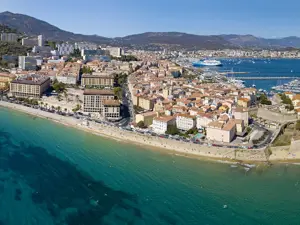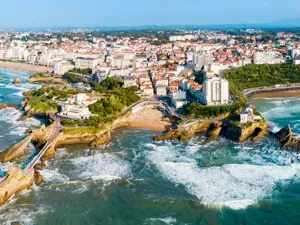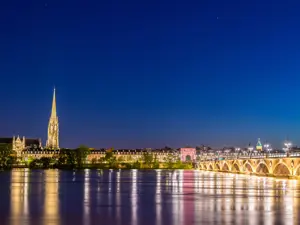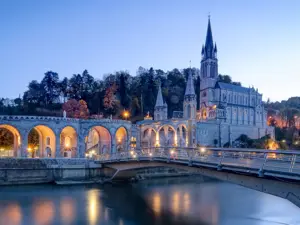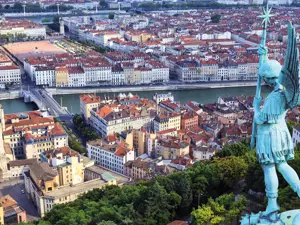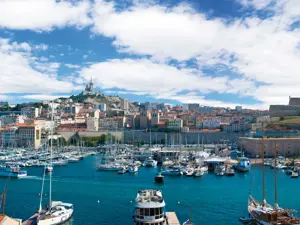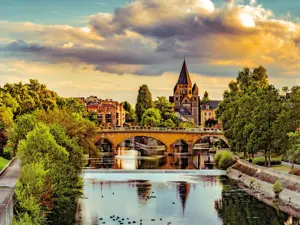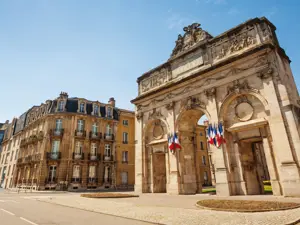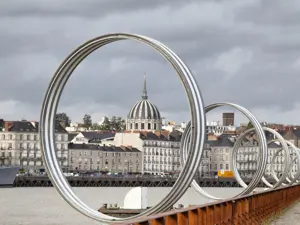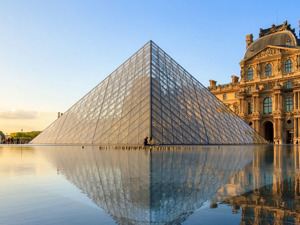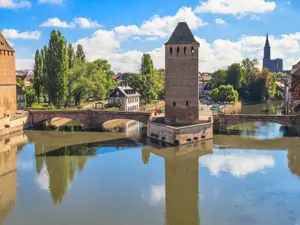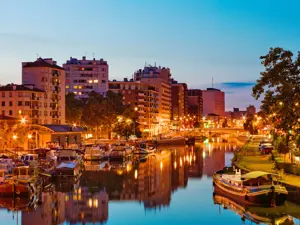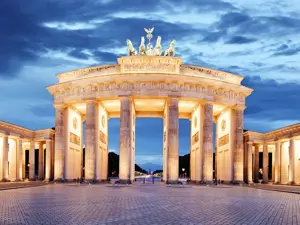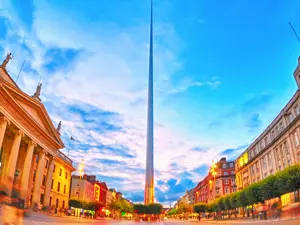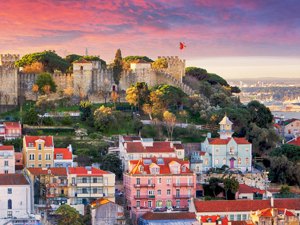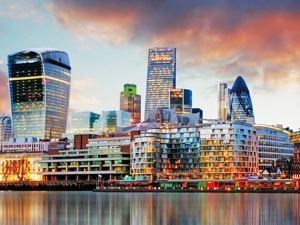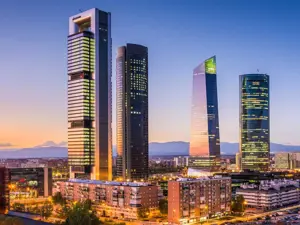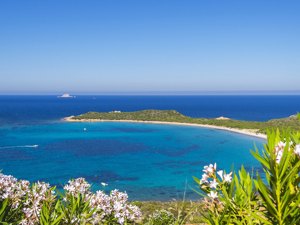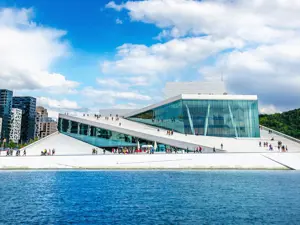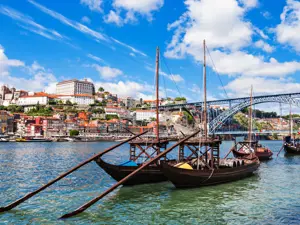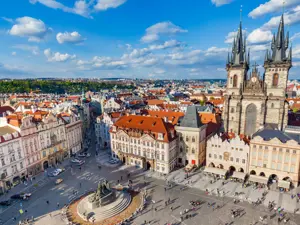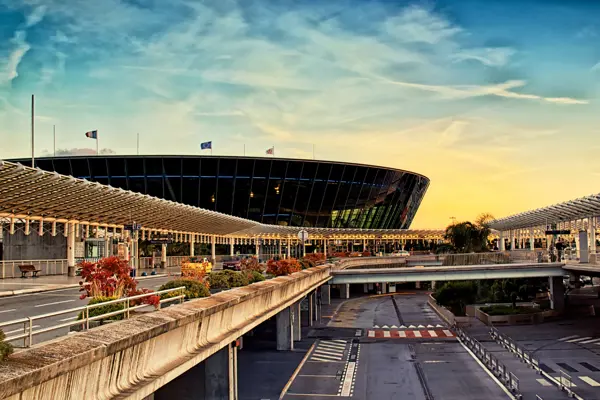An ideal destination for any season
Nice, previously Italian, passed to France in 1860. It is of particular appeal to foreigners thanks to its mild climate in all seasons of the year and the excellent connections that unite it to over 100 cities in 35 countries.
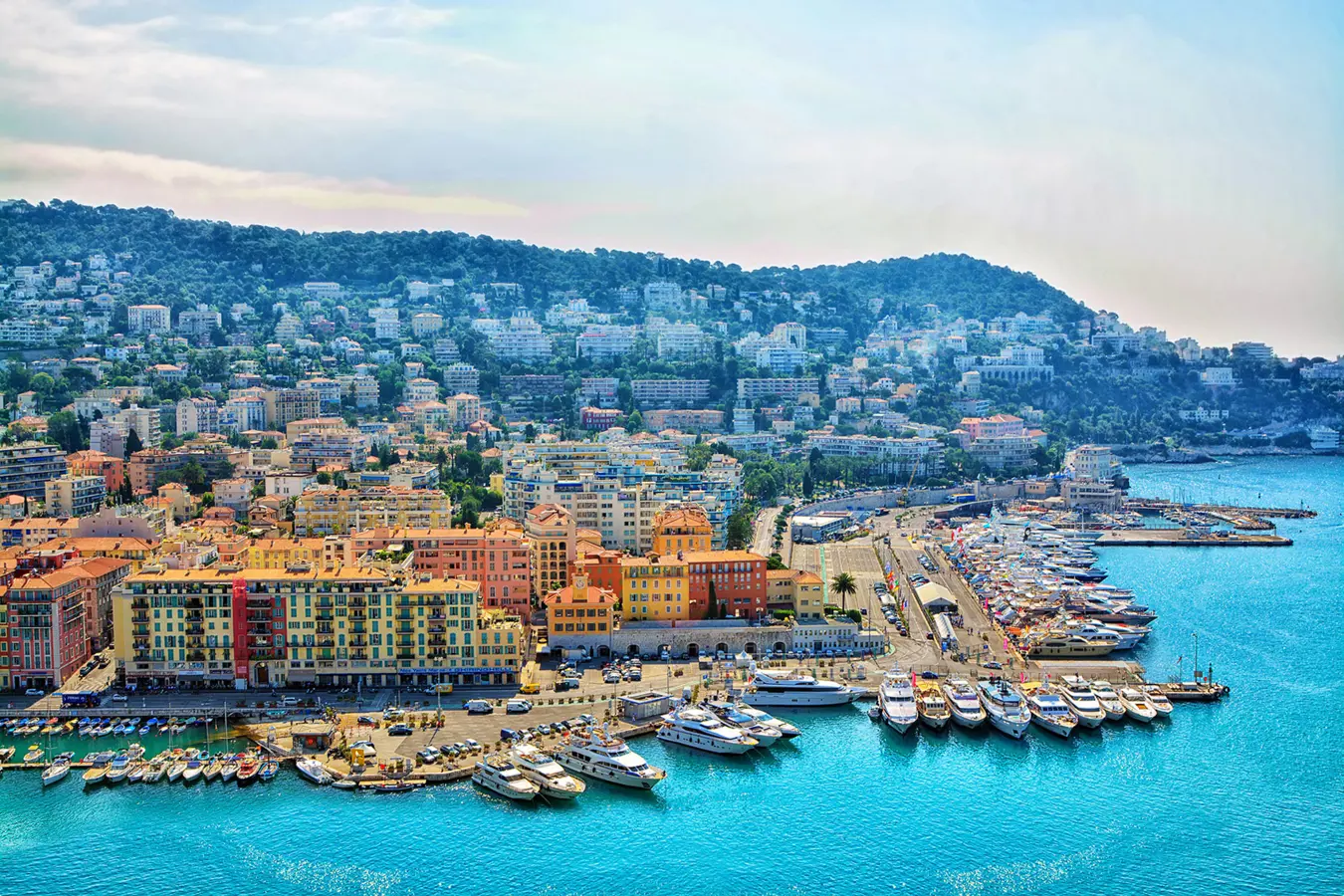
Cirty landscape of Nice. Copyright © Sisterscom.com / Shutterstock
Situated near the border with Italy, the city is, in fact, home to France’s third busiest airport. The centre of Nice is diverse and elegant, but the most famous and popular street is without doubt the Promenade des Anglais, a waterfront named after the English who, at the end of the nineteenth century, came in large numbers to this beautiful coastal city, where you can sit on the famous blue chairs and breathe in the sea air while enjoying a view of the deep blue sea.
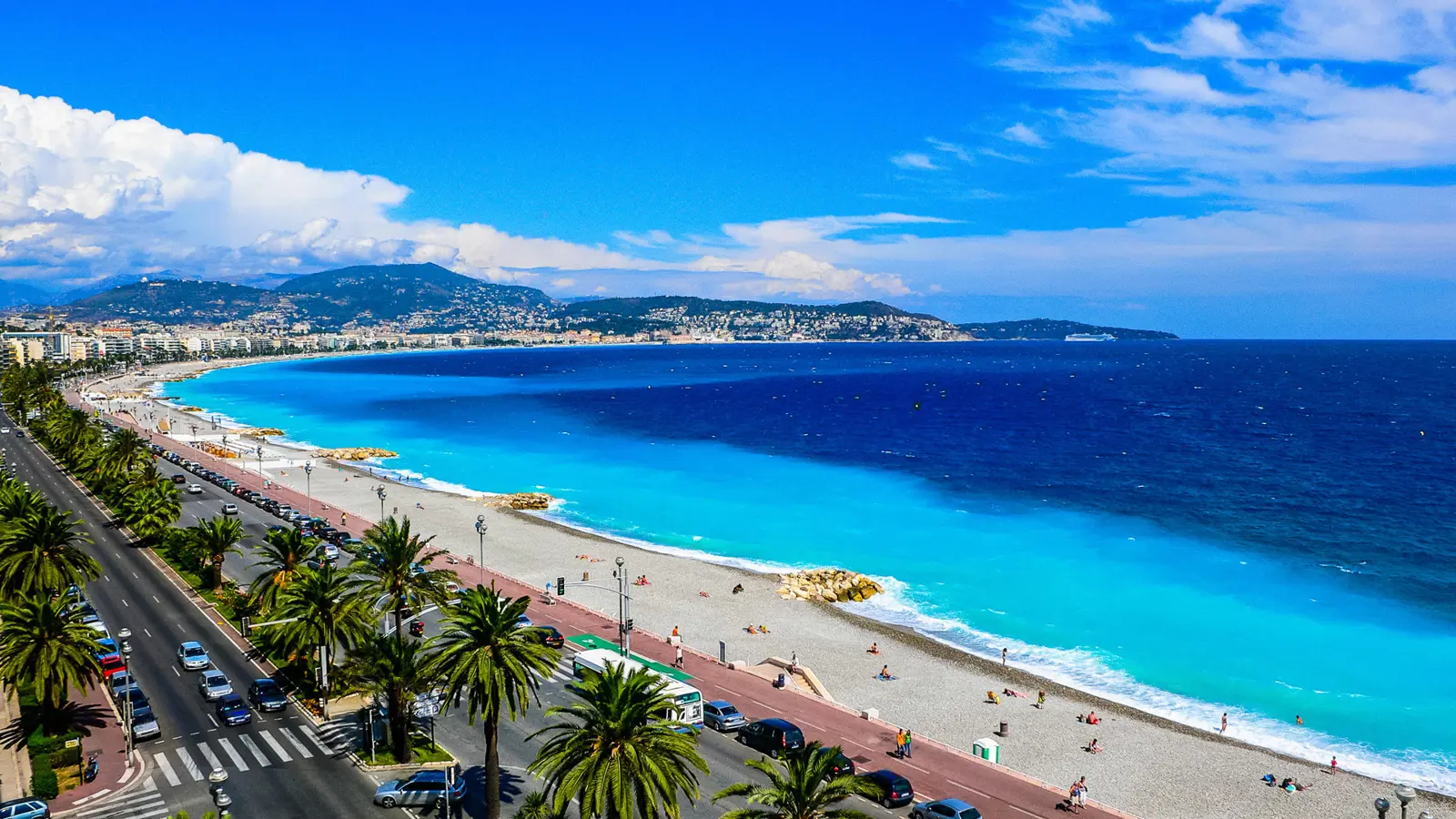
The waterfront of Nice. Copyright © Sisterscom.com / Shutterstock
A unique square is Place Masséna, which is paved with white and grey stone and houses works of modern art by the artist Jaume Pleusa: seven human figures, one for each continent, are set on metallic pedestals and at sunset become illuminated with changing colours.

The Place Masséna in Nice. Copyright © Sisterscom.com / Shutterstock
At the end of the square are the Galeries Lafayette, France’s largest and most luxurious department store for international clientele after Paris, as well as a beautiful fountain that spouts water to great heights and a monument dedicated to the Côte d’Azur. Place Garibaldi is the oldest square in Nice. It is surrounded by buildings of a warm yellow colour, and at its centre sits a statue of the great man of Nice Giuseppe Garibaldi, who led his men to fight for the Risorgimento, or resurrection, of Italy.
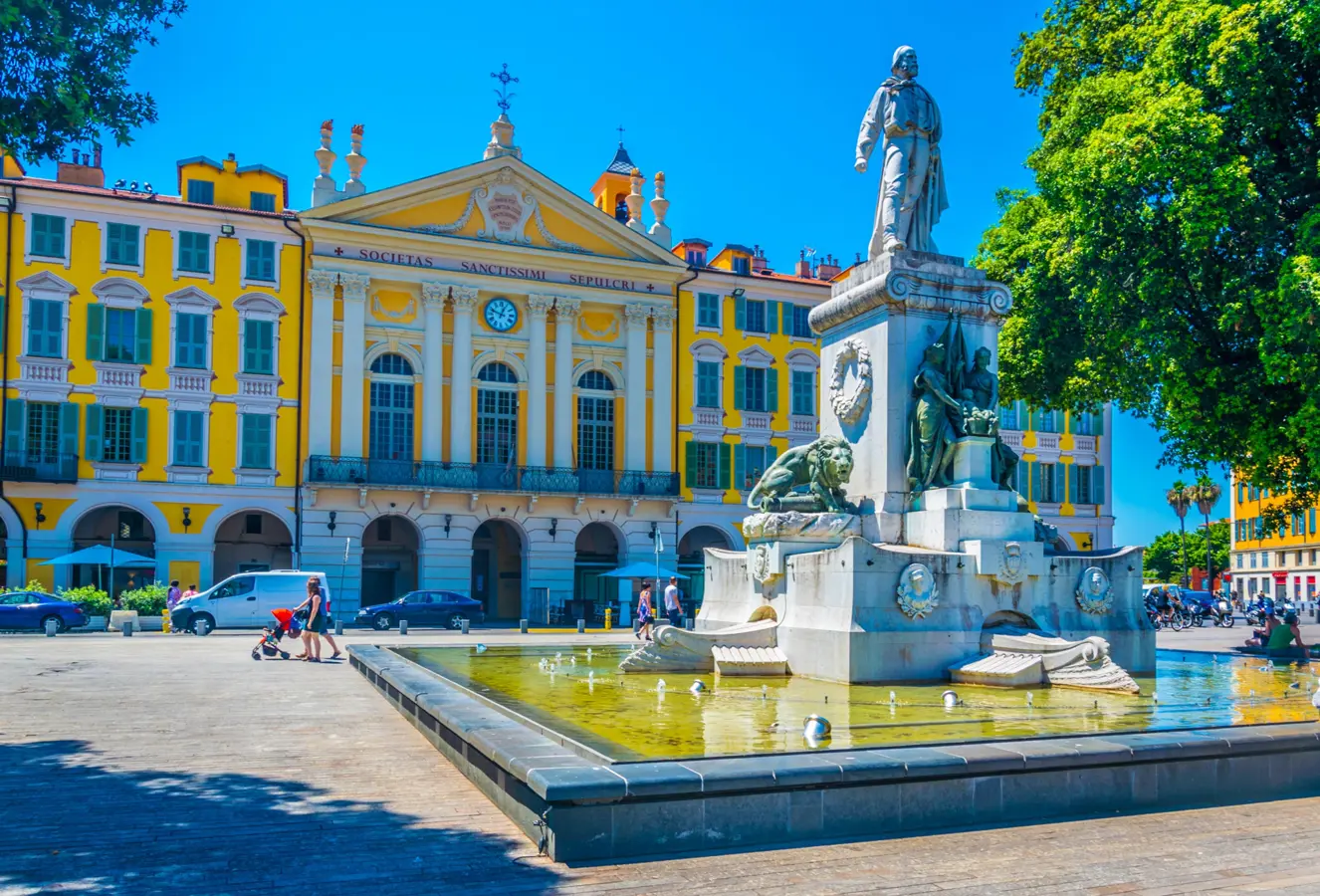
The monument dedicated to Giuseppe Garibaldi in Nice. Copyright © Sisterscom.com / Shutterstock
The most spectacular building is the Russian Orthodox Cathedral of St. Nicholas, with its large green domes, which is based on St. Basil’s Cathedral in Red Square in Moscow. Construction on this place of worship began in 1912 with the support of Tsar Nicholas II, who commissioned the largest Orthodox Church outside of Russia to meet the needs of the numerous Russians who wintered in Nice to escape the rigours of their nation’s climate.
Nice is also rich in museums, include the very interesting Musée National Marc Chagall, with paintings making up the Biblical Message and illustrating the books of the Old Testament, Genesis and Exodus, as well as the Song of Songs. The city is also home to the Musée Matisse which displays drawings, paintings, sculptures and ceramics by the French artist as well as almost 200 items of personal property. The Musée des Beaux Arts Jules Chéret instead is named after a more recent personality, the father of lithography and poster art, whose work takes one back to the period of the Belle Époque, as seen in the clothes, hair styles and movements of the women he depicted.
The famous Carnival is an important event in Nice, which attracts one million visitors each year with its beautiful floats that are lit up at night. During the carnival, people from the floats throw large quantities of flowers into the crowd, an event that has been named the "Bataille des Fleurs," (Battle of the Flowers).
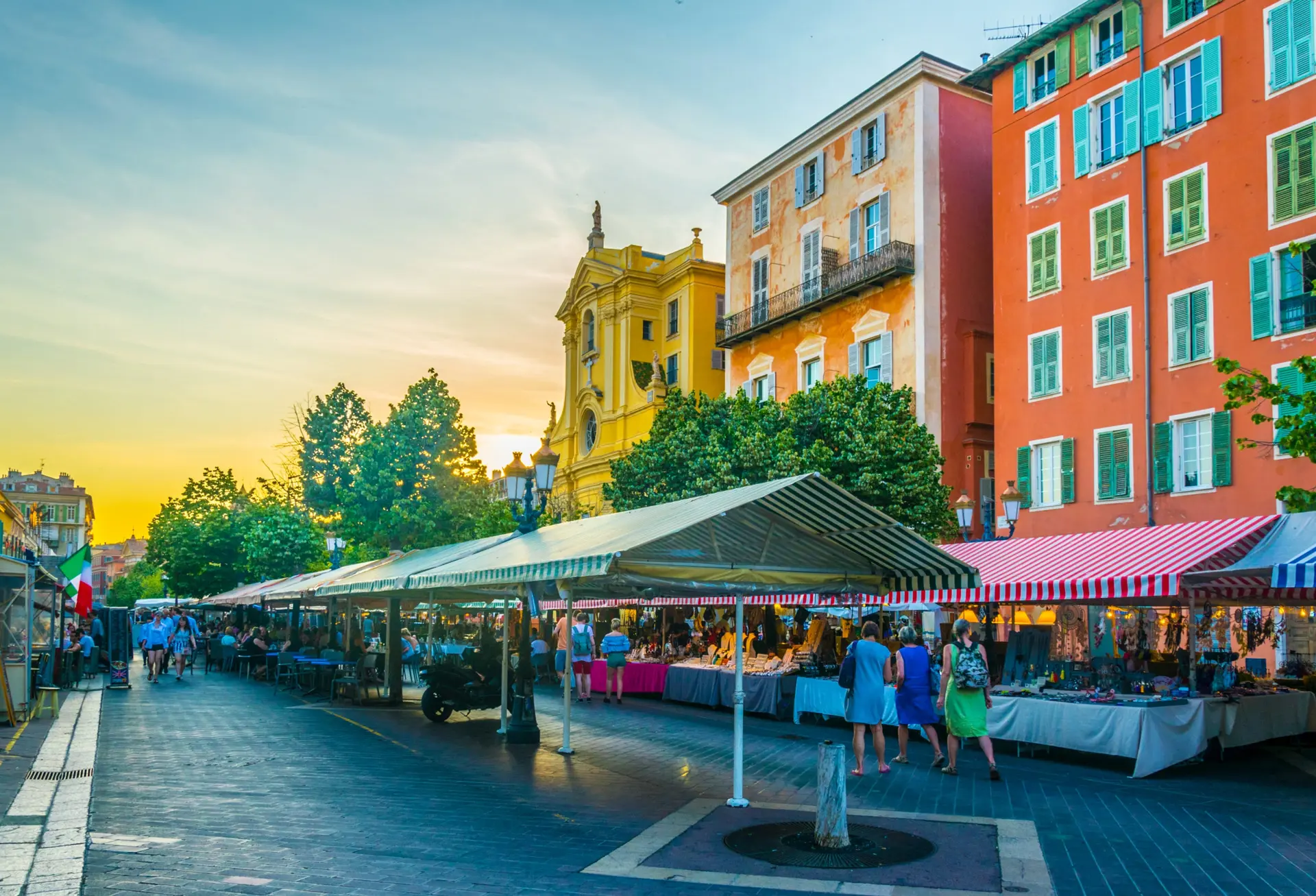
The old town is the most picturesque part of the city and features narrow alleyways and small shops of every kind, including antique and craft boutiques. The heart of this area is Cours Saleya, a pedestrian area where a market is held every day: a flower market from Tuesday to Sunday and an antique market on Monday.
Near here is the beautiful Gothic Cathedral of Sainte Réparate, patron saint of the city, who legend has it was brought to Nice by winged angels after her death in the Holy Land. Nice Castle can be reached by climbing the hill near this street. Although only a ruin, it offers a breathtaking view over the city.
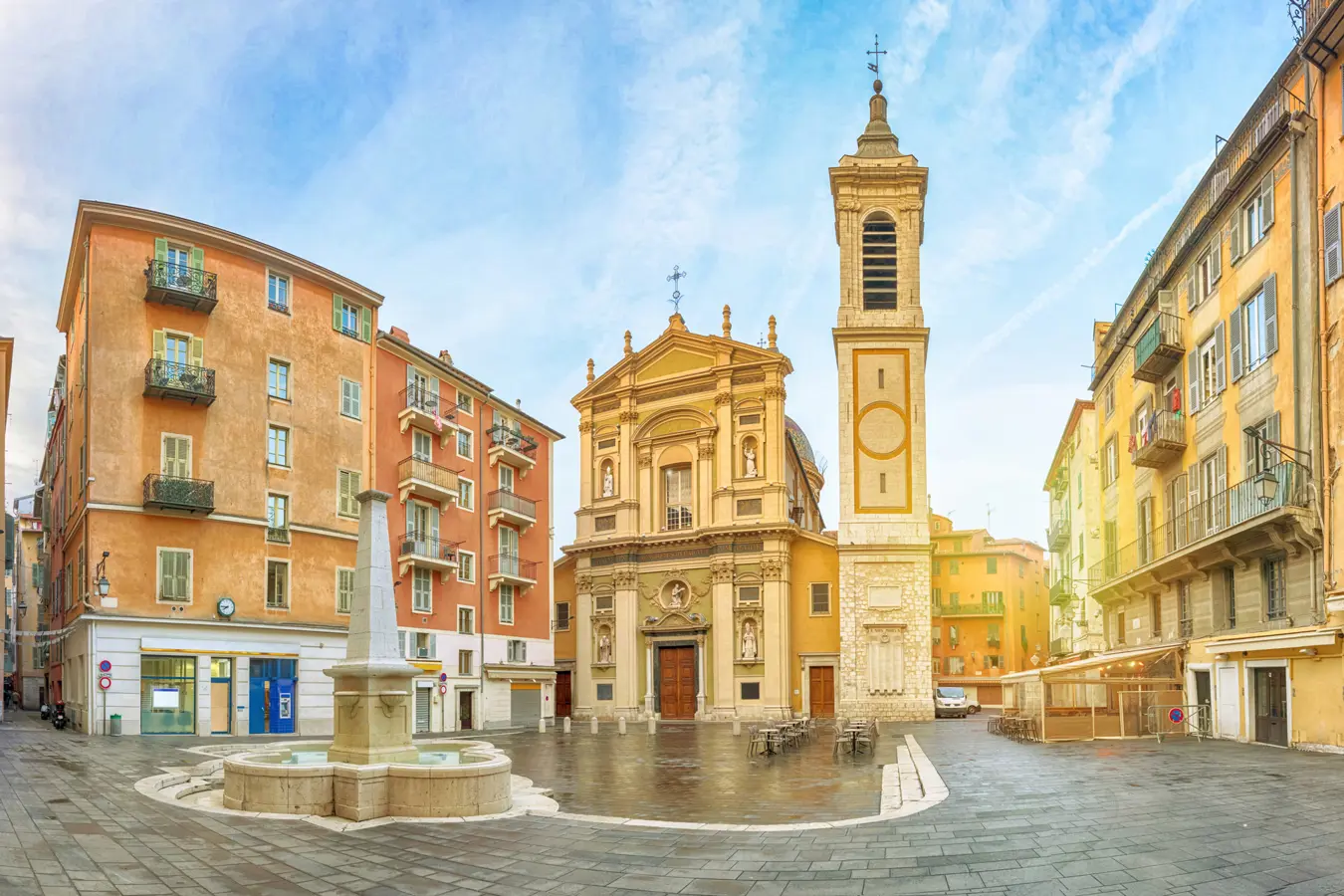
The Gothic Cathedral of Sainte Réparate in Nice. Copyright © Sisterscom.com / Shutterstock
A city, therefore, with much to discover and enjoy, even in terms of its food specialities. The various restaurants dotted around the city offer delicious flavoursome dishes of Nice cuisine, such as ratatouille niçoise, a local stew of mixed vegetables; socca, a kind of pancake made of chick peas; and pissaladière, a type of pizza stuffed with onions, anchovies, olives and garlic. And to finish, we recommend trying tapenade, a paste made with chopped olives, capers and olive oil, served on slices of crusty bread.
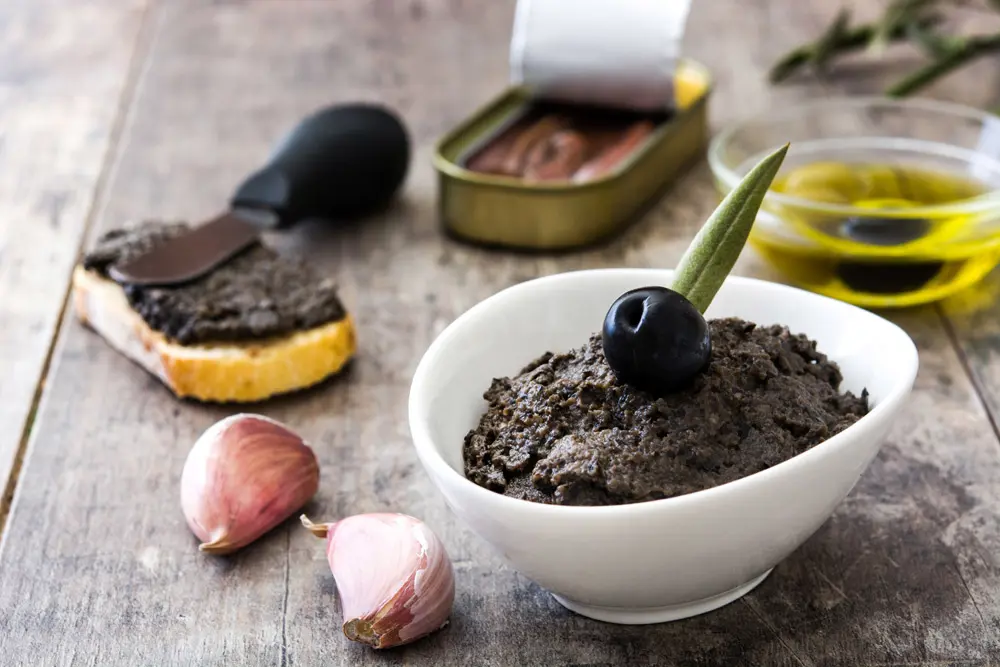
Tapenade Copyright © Sisterscom.com / Shutterstock

Ratatouille niçoise Copyright © Sisterscom.com / Shutterstock

Socca Copyright © Sisterscom.com / Shutterstock
Text by Anna Glik
Avion Tourism Magazine
Photos: Copyright © Sisterscom.com / Shutterstock
All rights reserved
Tourism Board
www.nice.fr
www.nicetourisme.com
www.france.fr
Partnership with Booking.com
Where to sleep in Nice
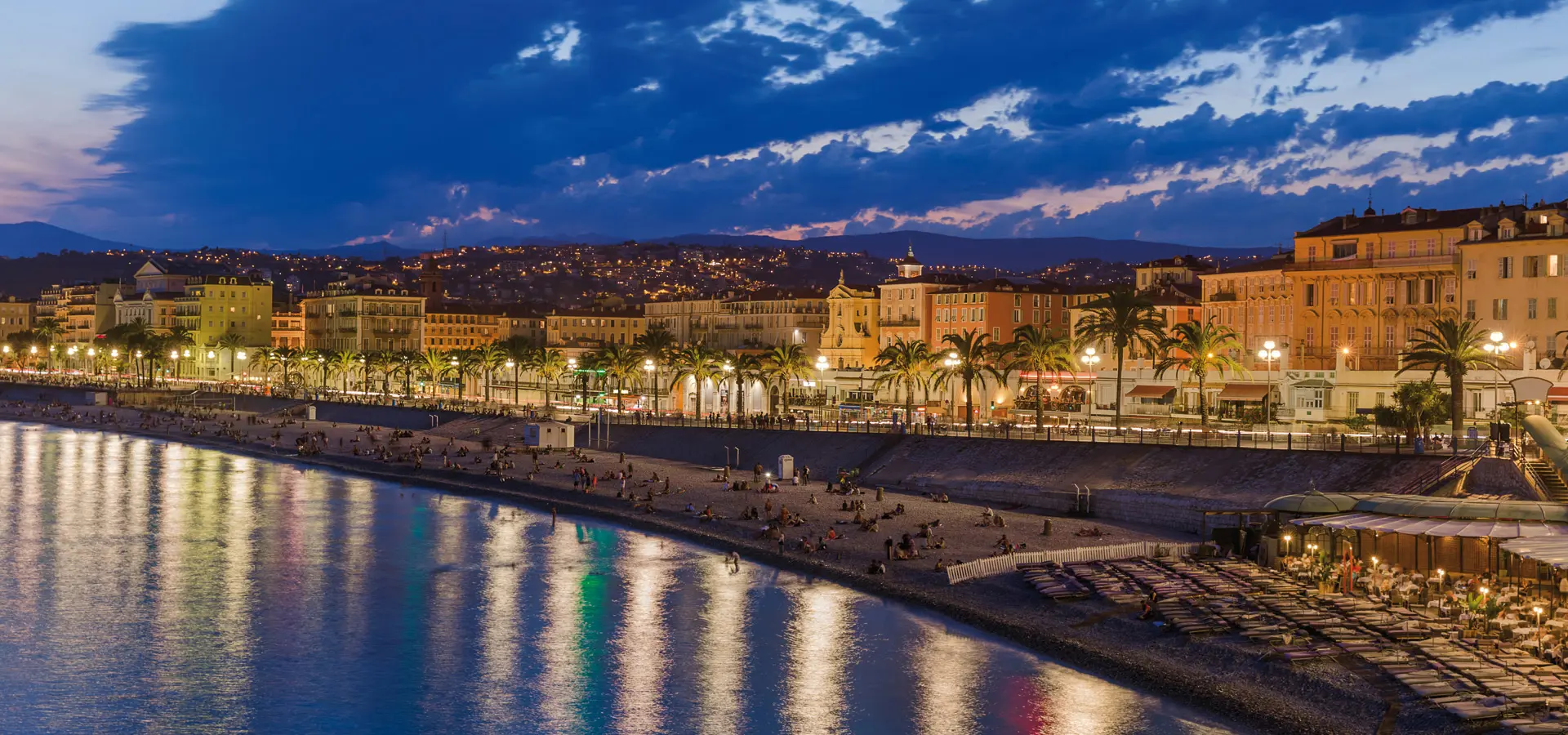
Nice. Copyright © Sisterscom.com / Shutterstock
Nice is a welcoming city and offers different possibilities for accommodation.
To find the ideal hotel and the best offers you can do a search for the stars but also for districts or landmarks.
STARS
Hotels for stars, differentiated by type of services:
LANDMARKS
Hotels in tourist areas
LANDMARKS
Hotels in tourist areas
AIRPORT
Hotels near the airport
WHERE TO GO in nice
Monuments in Nice
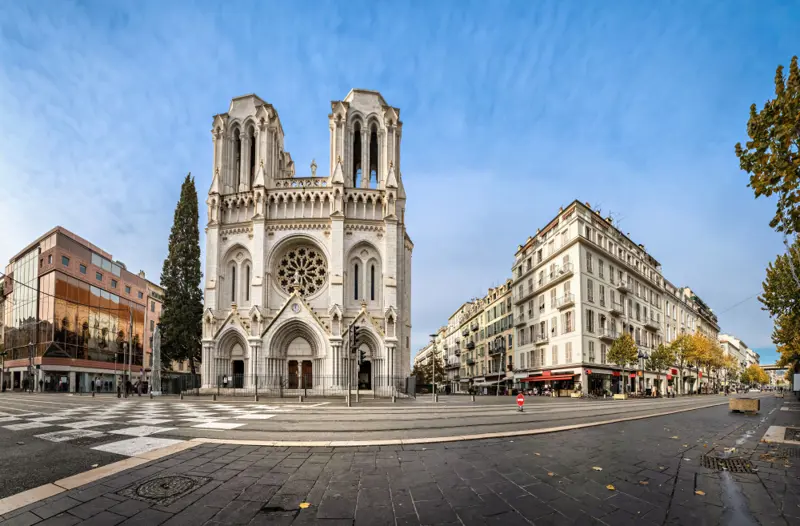
NOTRE-DAME BASILICA
This is the largest church in Nice and the first modern religious building. It was built after reunification (1864-1868) and took inspiration from Angers Cathedral. It is adorned by nineteenth-century stained glass windows and embellished by two square-shaped towers and a magnificent rose window that depicts some of the scenes from the Assumption.
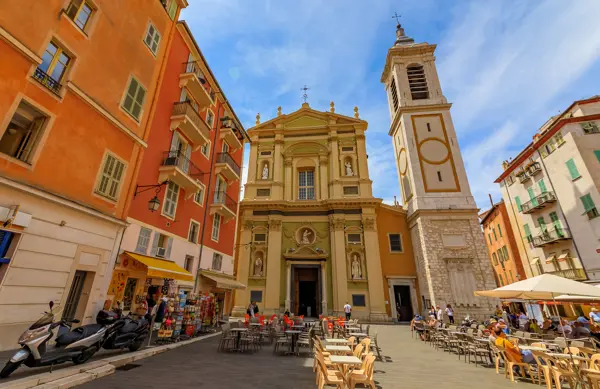
Copyright © Sisterscom.com / Shutterstock
SAINTE-REPARTE CATHEDRAL
This is the largest sanctuary in Nice’s old town and was declared a cathedral in the sixteenth century. Inspired by the Roman architectural models of the early Baroque period, the building features a Latin cross plan. The decoration in the chapel and the choir is magnificent. The whole interior recalls St. Peter’s Basilica in Rome.
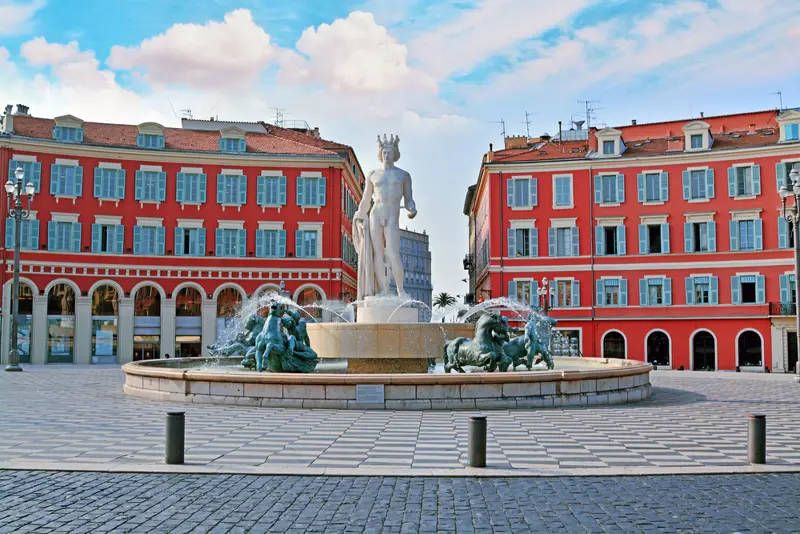
Copyright © Sisterscom.com / Shutterstock
PLACE MASSENA
The Piedmont influence is seen in the square’s architecture, which is the centre of the city of Nice and site of the famous carnival, and is evident in the red facades, the white frames of the windows, the arcades, and the square shape of the northern section. It was once divided into two parts but was reunited in 1884. It has also been restored and embellished with seven statues that are lit at night.

ORTHODOX CATHEDRAL
Classified as a historic monument, the cathedral takes stylistic inspiration from the churches in Moscow and is a place of worship. Its interior is richly decorated and houses icons, frescoes, carved woodwork and an embossed and chiselled metal iconostasis.
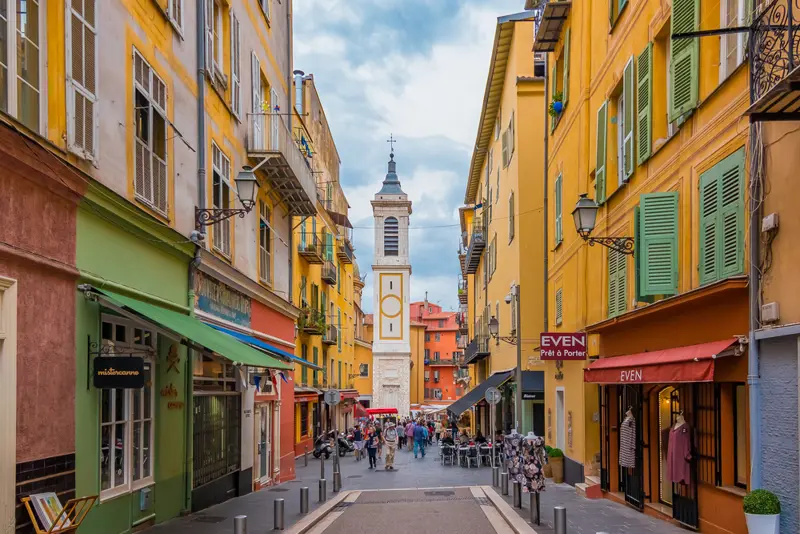
OLD TOWN
The narrow and vibrant streets, the history, the Baroque heritage and the colourful markets make the Old Town truly unique. It is worth visiting the Prefecture Palace and the Rossetti Square, overlooked by buildings with ochre facades, flower-filled balconies, cafe terraces and the Baroque cathedral.
Museums in Nice
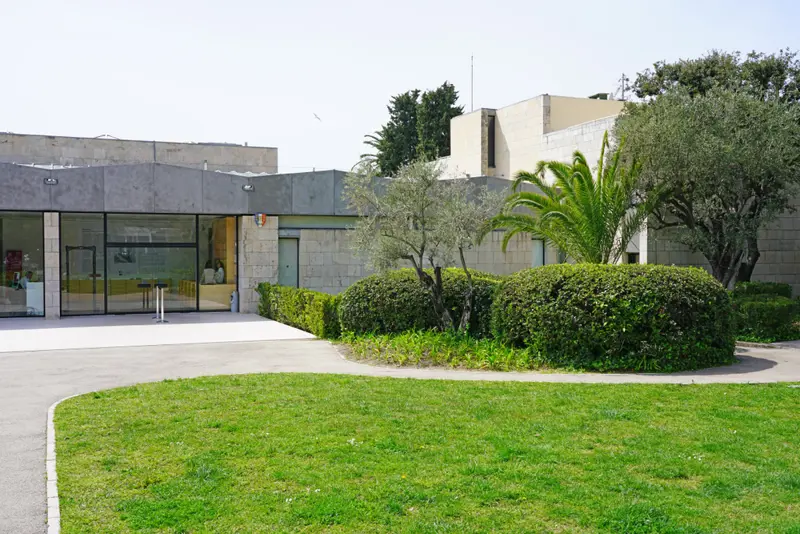
MARC CHAGALL NATIONAL MUSEUM
This museum was created as a result from the artist’s desire to bring together in one purpose-built location his most important work based on the Bible: the 17 paintings that make up the Biblical Message. The exhibition unfolds around the works of the painter on the themes of the Old Testament, completed by secular or faith-based work. It houses over 400 paintings, tempera paintings, drawings, wash drawings and pastels.
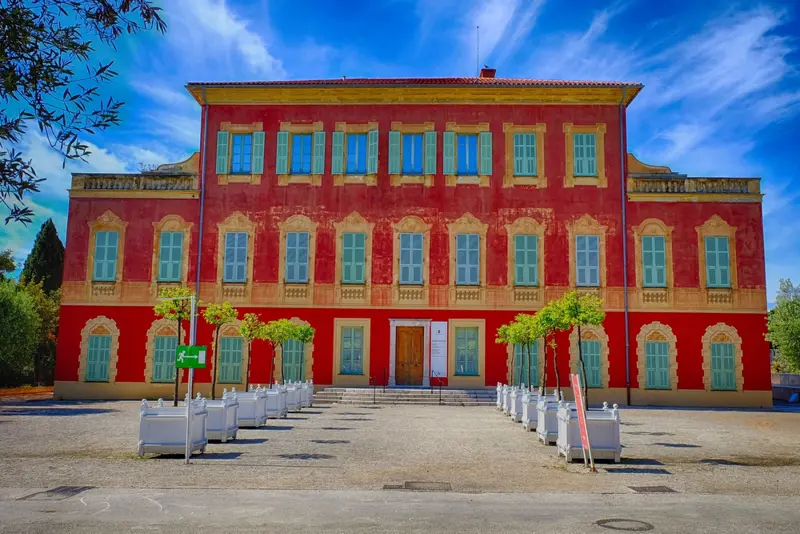
Copyright © Sisterscom.com / Shutterstock
MATISSE MUSEUM
This museum is located on Cimiez Hill, not far from the Franciscan Monastery and Italian gardens, and the Regina hotel where Matisse used to reside. Since 1963, the museum houses the collection of work left by the artist and his heirs. Matisse lived in Nice from 1918 until 1954.
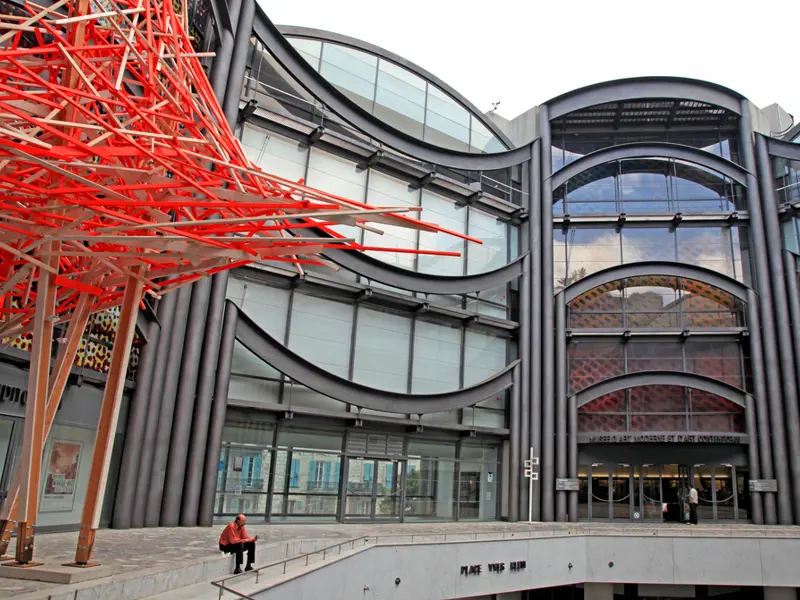
MUSEE D'ART MODERN ET CONTEMPORAIN (MAMAC)
Housed in an architecturally unique building, the museum features the works of European and American avant-garde artists since the early ‘60s. The collection has nearly 1,200 works that bear witness to the innovative art movements from the '60s to the '70s and the present day with important works by great artists.
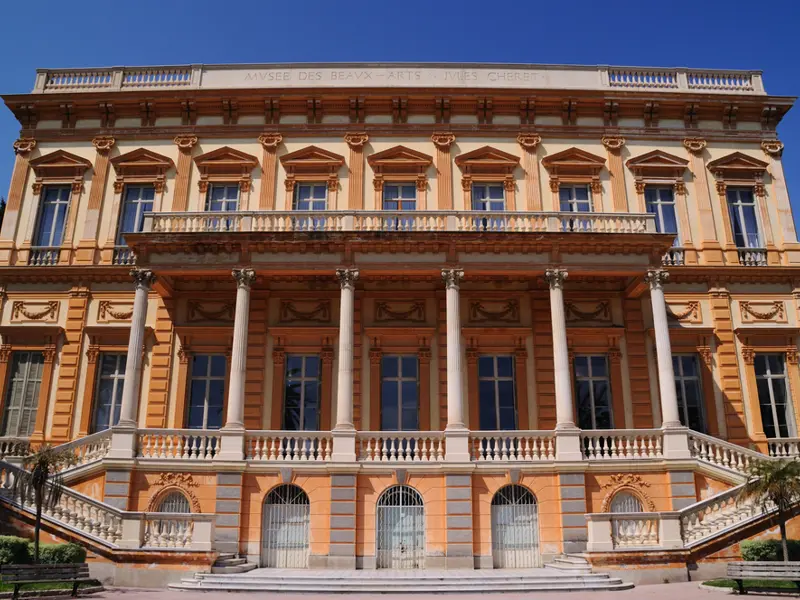
MUSEE DES BEAUX-ARTS
This consists of the state donations bequeathed by Napoleon III and was set up in 1928 in a magnificent nineteenth-century villa. The paintings and sculptures housed inside range from the thirteenth to the twentieth century and include works from sixteenth-century artists Van Loo, Fragonard, Chéret, Dufy and those of the Impressionists Rodin and Carpeaux.
Excursions in Nice
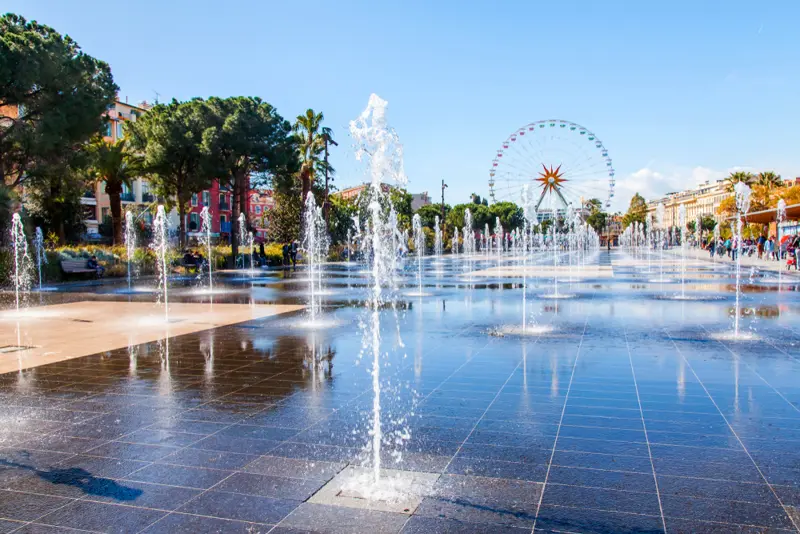
LA PROMENADE DU PAILLON
Situated in the heart of the city, this is a 12 hectare urban park that connects the Musée d'art moderne et d'art contemporain to the Theatre de Verdure and the Promenade des Anglais. It is a “green lung” in the city and is characterised by a large variety of plants set within a relaxing atmosphere.
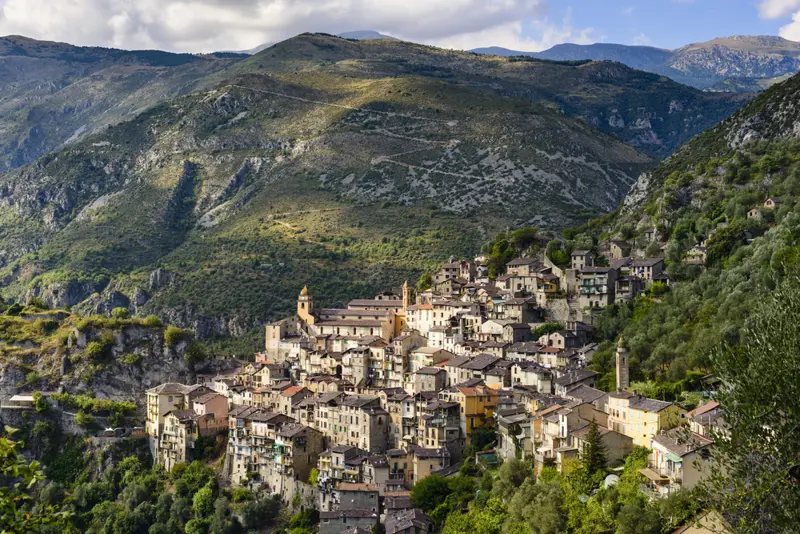
SAORGE MONASTERY
Near Nice, the village of Saorge stands on the gorges of the Roya River. The church of the Franciscan monastery, which was, founded in 1633, was finished in a Baroque style. The refectory has kept the original seventeenth-century decoration and the cloister is decorated with eighteenth-century frescoes depicting the life of St. Francis of Assisi. It houses 9 sundials from the seventeenth, eighteenth and nineteenth century and one of the oldest Via Crucis painted on canvas of the Maritime Alps.
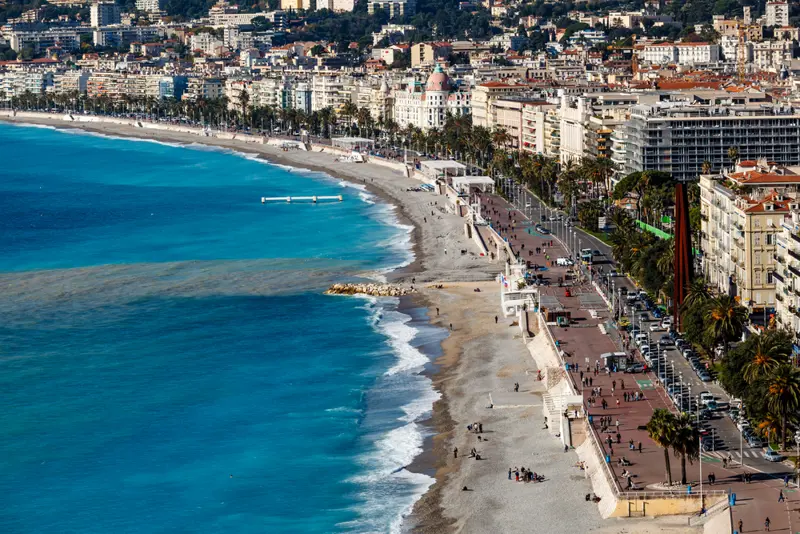
LA PROMENADE DES ANGLAIS
With its 7km of beaches, this is a popular shoreline walk, which is always filled with flowers, situated on the Bay of Angels. It is the visual epitome of Nice and is ideal for those who wish to jog, walk or cycle. Built in 1820 by the British man, Reverend Lewis Way, it was inaugurated in 1931 by the Duke of Connaught, son of Queen Victoria.
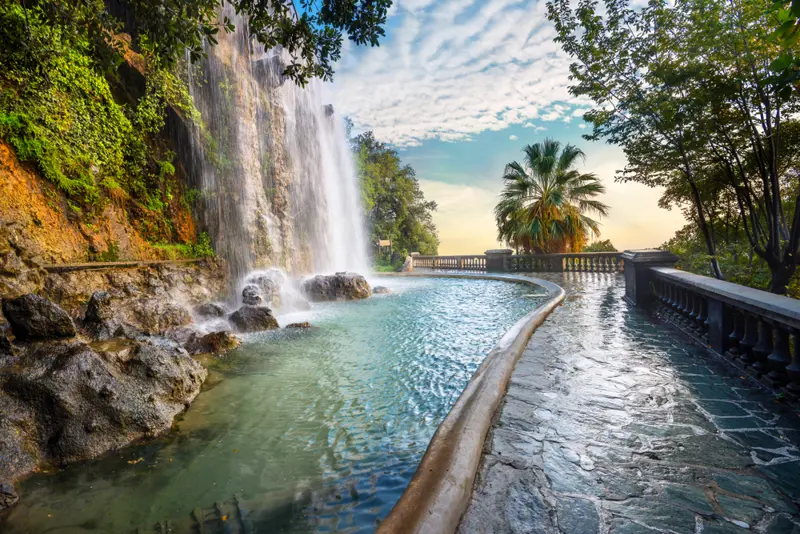
CASTLE HILL
From here, exceptional views of the Bay of Angels, the roofs of the Old Town and the southern Alps can be enjoyed. The castle, equipped with a citadel, was destroyed by Louis XIV’s armies in 1706. The vegetation, brushwood and waterfall make it an ideal location for a stroll and it is beautifully lit in the evenings. It can be reached on foot from the Old Town and Garibaldi Square, either by elevator or tourist train.
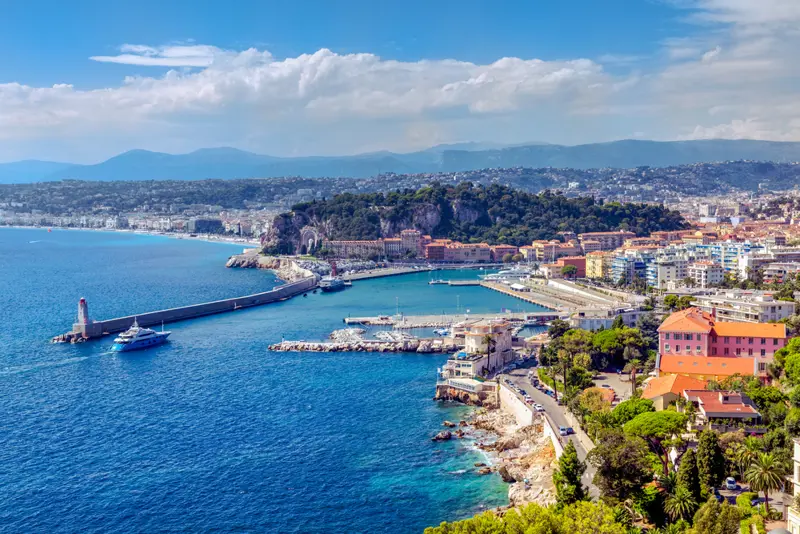
COTE D'AZUR
On a boat, from the Cap de Nice to the Promenade des Anglais and passing through the famous Villefranche Bay, the scenery is a dream. Sailing along the coast you discover a rich landscape, beautiful buildings and magnificent villas visible only from the sea. The short cruise runs along the Baie des Anges, the Cap de Nice, Cap Ferrat and enters the natural harbour of the Villefranche-sur-Mer.
Partnership with GetYourGuide
Discover all tours
News & Useful info
Shopping
Luxury
You might be interested in
Destinations found in the vicinity
Other destinations
Airports nearby Nice







